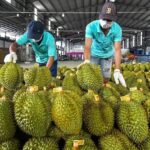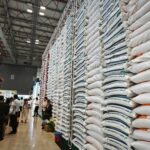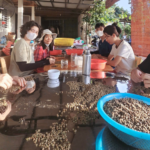The fresh coconut planting model in Tien Giang province has been thriving recently. However, the output of this commodity remains unstable, and prices are not high. Therefore, improving the quality of coconut gardens to export standards is crucial, especially regarding the work of assigning planting area codes and packaging facility codes.
Tien Giang province currently has over 22,000 hectares of coconut gardens, concentrated in Cho Gao district (7,700 ha), Chau Thanh district (5,000 ha), Tan Phu Dong district (2,700 ha), Go Cong Tay district (2,500 ha), and My Tho city (1,700 ha). The majority of the fresh coconuts are of the Malay and Green Siamese varieties.
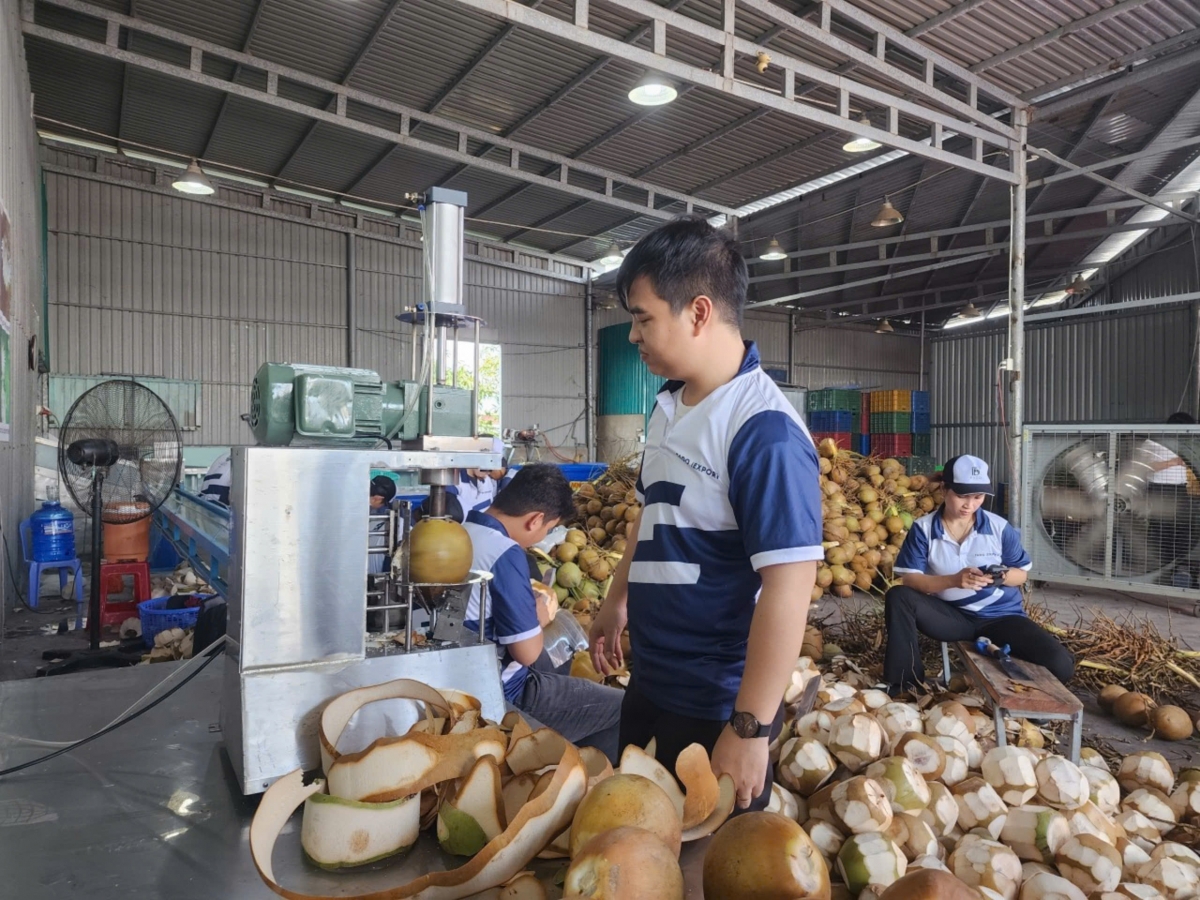
Fresh coconuts in Tien Giang province used to be sold domestically, leading to unstable prices.
At this point, due to the peak rainy season, farmers are selling fresh coconuts at a price range of 35,000 to 40,000 VND per dozen; in remote areas, the price goes down to 25,000-30,000 VND per dozen. With these prices, coconut farmers are not making a profit.
To enhance the value of coconuts for export purposes, the agricultural sector, farmers, and coconut trading establishments are focusing on developing raw material areas to obtain planting area codes and packaging facility codes.
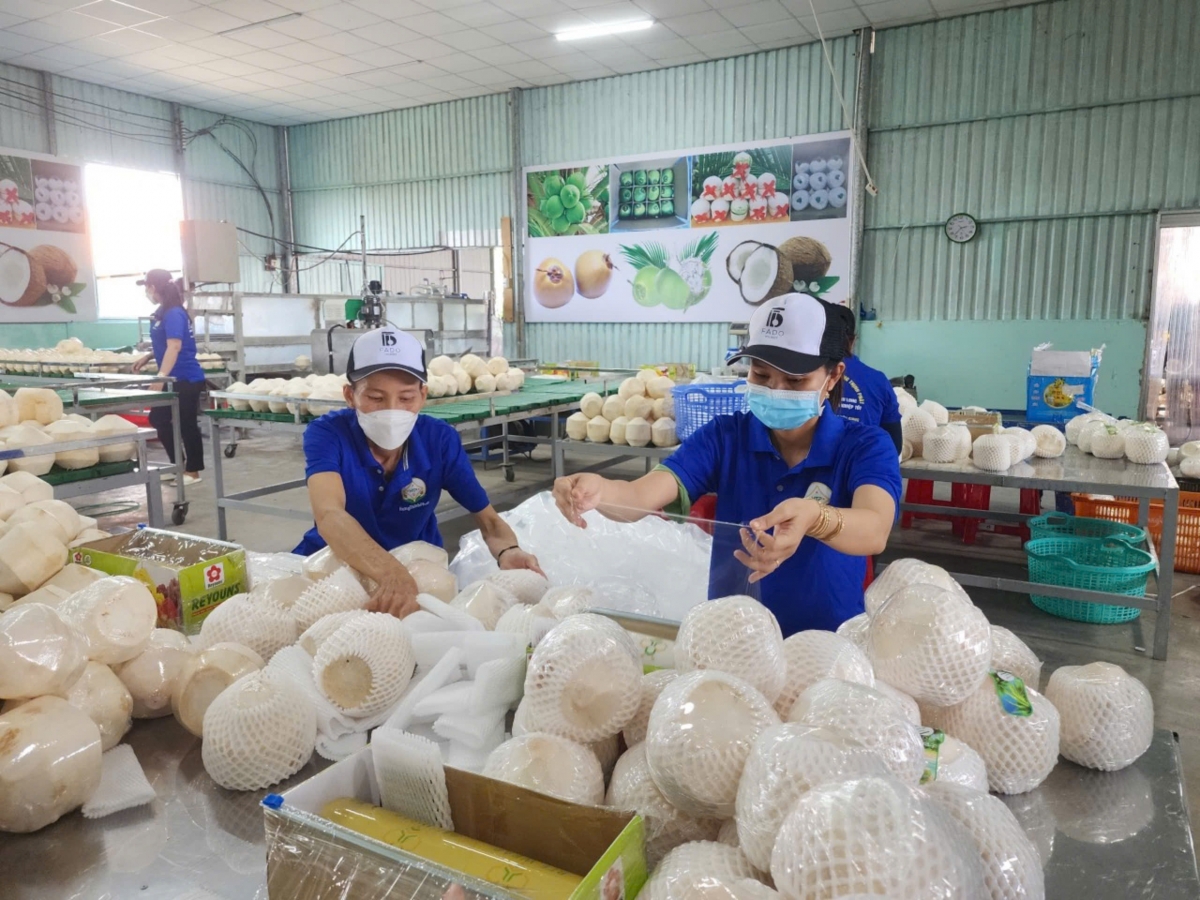
Fresh coconuts from Hung Thinh Phat Cooperative in Cho Gao district are exported to China through official channels.
According to the Department of Agriculture and Rural Development of Tien Giang, the General Administration of Customs of China (GACC) has recently approved a list of planting area codes and packaging facility codes for fresh coconuts from the province. Specifically, 40 planting area codes have been assigned to coconut trees, with Cho Gao Coconut Cooperative alone accounting for 10 codes, and nine packaging facility codes have been granted.
The Plant Protection and Cultivation Division of Tien Giang province has issued documents to the planting areas and packaging facilities with the approved codes, instructing them to implement management and supervision in accordance with regulations. They also guide the units with approved codes to comply with the requirements of both Vietnam and the importing country, mandating that packaging facilities conduct pre-export inspections to ensure freedom from quarantine pests of concern to China and adhere to phytosanitary and food safety requirements. In cases of violations by the planting areas or packaging facilities, exports will be halted as per the notification of the importing country.
Recently, Hung Thinh Phat Cooperative (Quon Long commune, Cho Gao district) and FADOlexport Joint Stock Company exported three containers of Siamese coconuts to China via official land borders, opening up a promising direction for the locality’s coconuts.
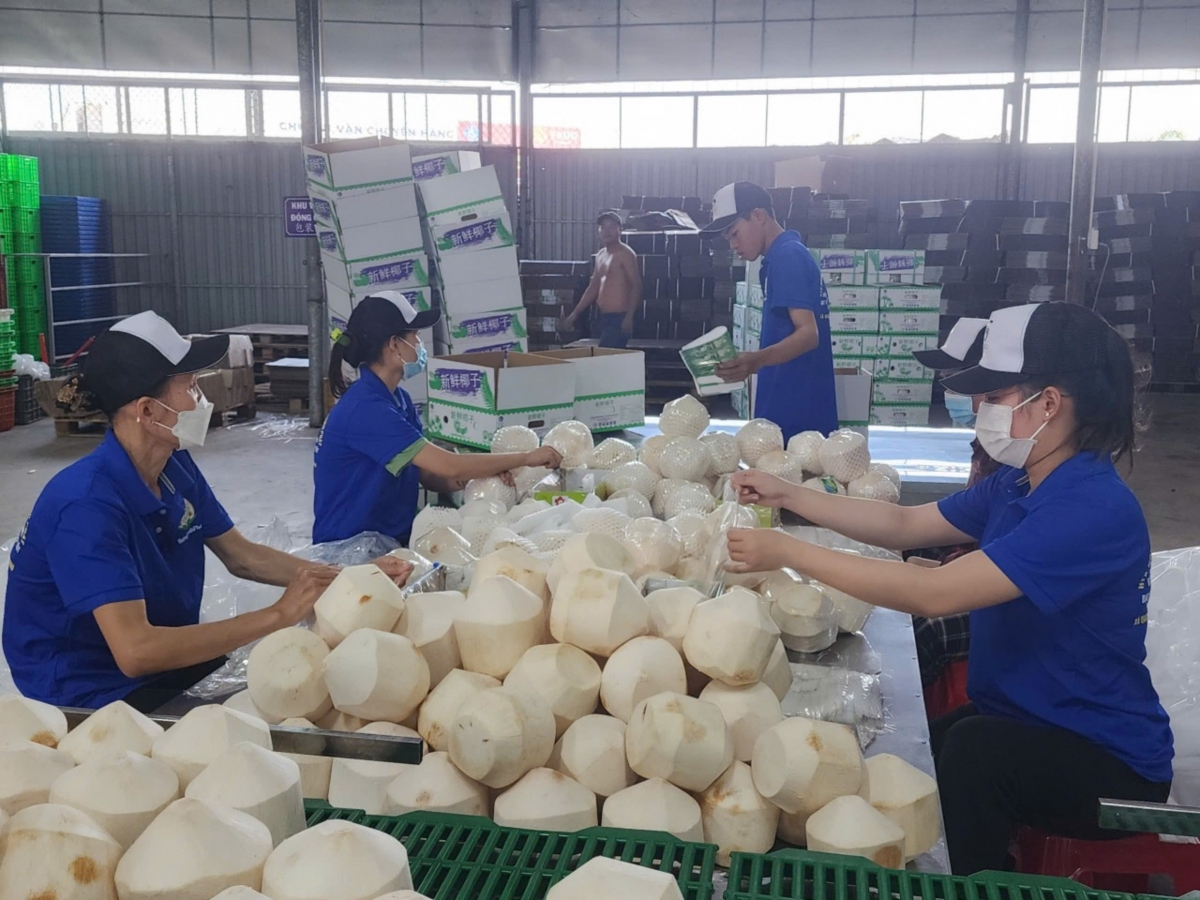
With the assigned planting area and packaging facility codes, the value of fresh coconuts will increase and reach further markets.
Export Surge: Vietnam’s Nghe An Province Experiences Significant Growth in Exports to Singapore and China
The businesses of Nghe An have successfully ventured into the global arena, exporting their goods to an impressive 142 countries and territories worldwide. In the first nine months of 2024, the province witnessed a significant surge in its export turnover to several key markets compared to the same period in previous years.
The Evolving Trade Dynamics: US-Vietnam Bilateral Trade Nears $90 Billion Landmark
The latest figures from the Ministry of Industry and Trade reveal a robust bilateral trade relationship between Vietnam and the United States. In the first eight months of 2024, two-way trade between the nations soared to $87.7 billion, showcasing significant growth in both export and import activities.
The Great Rice Rebalance: Vietnam’s Post-Storm Rice Conundrum
Amidst a stable domestic rice supply and steady exports, certain social media accounts have seized the opportunity presented by natural disasters to spread misinformation about rice shortages. This is a deliberate attempt to create panic and disrupt the equilibrium of the market. It is imperative that we, as responsible citizens and consumers, remain vigilant against such deceitful tactics and rely only on official sources for accurate information.



























